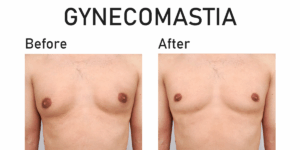It’s a question we hear frequently in our practice: “Can fillers give me the same results as a facelift?” In an age of incredible advancements in non-surgical aesthetics, it’s easy to wonder if a few injections can truly replicate the transformative power of surgery. While dermal fillers are undeniably a powerful tool in our aesthetic arsenal, the short answer is: no, fillers are not “as good as” a facelift – but that doesn’t mean they aren’t excellent for the right patient and concerns.
Let’s break down the differences and help you understand which option might be best for achieving your aesthetic goals.
Understanding the Core Functions: Lift vs. Volume
The fundamental distinction lies in what each treatment primarily addresses:
- Facelift (Rhytidectomy): This surgical procedure is designed to lift and tighten sagging skin and underlying tissues, thereby rejuvenating the face’s appearance. It addresses moderate to severe skin laxity, jowls, deep nasolabial folds (lines extending from the nose to the mouth), and a tired, droopy appearance in the mid-face and neck. A facelift repositions sagging fat pads, removes excess skin, and tightens the underlying musculature, providing a dramatic and long-lasting rejuvenation.
- Dermal Fillers: These injectable gels are primarily used to restore lost volume, smooth out lines and wrinkles, and enhance contours. As we age, we lose fat, bone, and collagen in the face, resulting in hollowness, shadows, and a deflated appearance. Fillers replenish this lost volume, softening creases and providing a more youthful plumpness.
When Fillers Shine: The “Liquid Facelift”
For patients with mild to moderate signs of aging, primarily characterized by volume loss rather than significant skin laxity, dermal fillers can achieve remarkable results. This is often referred to as a “liquid facelift” because skilled injectors like Dr. Glasberg can strategically place fillers to:
- Restore Mid-Face Volume: Plumping up cheeks that have sunken, reducing the appearance of under-eye hollows and nasolabial folds.
- Soften Lines and Wrinkles: Directly filling static wrinkles around the mouth, chin, and temples.
- Enhance Contours: Defining the jawline, chin, or temples for a more balanced and youthful profile.
- Provide a Subtle Lift: By restoring volume to areas that have deflated, fillers can create an illusion of lift, making the face appear less “pulled down.”
Benefits of Fillers:
- Minimally invasive with no downtime.
- Immediate results.
- Results typically last between 6 months and 2 years, depending on the type of filler and the treatment area.
- Can be a great “entry point” to facial rejuvenation.
- Customizable and reversible (with hyaluronic acid fillers).
When a Facelift is the Gold Standard
For patients with moderate to severe skin laxity, significant jowling, prominent neck bands, and deep folds that are no longer effectively addressed by volume alone, a surgical facelift offers superior and more comprehensive results.
- Proper Lifting and Repositioning: A facelift physically lifts and repositions the underlying tissues, removing excess skin to directly correct sagging and create a tighter, more defined jawline and neck.
- Longer-Lasting Results: While fillers require regular maintenance, the results of a facelift typically last 10-15 years or more, providing a more enduring rejuvenation.
- Addresses Neck Concerns: A facelift often includes a neck lift component, effectively addressing loose skin and banding in the neck area that fillers cannot correct.
Benefits of a Facelift:
- Addresses significant sagging and skin laxity.
- Provides dramatic, long-lasting results.
- Comprehensive rejuvenation of the mid-face, lower face, and neck.
- Can correct structural issues that fillers cannot.
Conclusion
While dermal fillers are phenomenal for volume restoration and subtle enhancements, they cannot physically lift and reposition significant amounts of sagging skin in the way a facelift can. Think of it this way: fillers are like adding air to a deflated balloon (restoring volume), while a facelift is like re-tying the balloon string and tightening the balloon’s surface (lifting and tightening).
The “best” option for you depends entirely on your anatomy, the degree of aging you’re experiencing, your aesthetic goals, and your willingness for downtime.
Schedule Your Consultation Today
Schedule a consultation with Dr. Scot Glasberg, a board-certified plastic surgeon with decades of experience delivering safe, natural-looking results in NYC. Please contact our office at (212) 717-8550 or use our online form, to schedule a consultation to discuss the options available for you.







